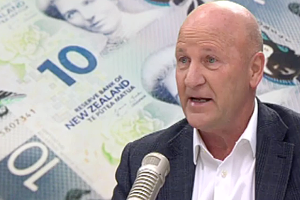Interest-only loans spurned as mortgage arrears increase
Alongside increased credit demand, mortgage arrears are up 25% year-on-year as households across the country continue to roll from low to high fixed interest rates.
Monday, December 4th 2023, 9:55AM
by Sally Lindsay

Credit bureau Centrix says although demand for mortgage and car loans fell 7.7% and 4.2% respectively, mortgage arrears rose slightly, with nearly 1.3% of home loans in arrears in Oct, compared to 1.25% in Sept.
While a small increase – the rising trend concerns Centrix, even though the level is still low and nowhere near the numbers of the GFC.
Centrix managing director Keith McLaughlin says there is an expectation high interest rates will persist through 2024 and people struggling with repayments should contact their credit provider about a repayment plan.
Overdue loans jump
Westpac, ANZ and BNZ have reported $915 million in loans overdue by 90 days from $533m a year ago. They are contacting borrowers who may be on the verge of financial stress to explore options.
Many customers also have savings or have made extra payments on their mortgages.
ANZ, NZ’s biggest home loan lender, has $107 billion in housing loans. Households in arrears, including those who are 90 days or more behind, accounted for $1.65b, up from $1.09b a year before.
While only a small number of ANZ’s one million customers – about 255 households – were missing home loan payments, many more are behind in other payments.
Centrix data shows consumer arrears across the country rose 6.1% and are tracking close to pre-Covid levels after falling to historic lows during the pandemic. About 431,000 people are behind, up from 427,000 a month earlier. Of that number 156,000 consumers are more than 30 days past due, while 103,000 are more than 60 days behind, and 83,000 more than 90 days past due on one or more credit contracts, including credit cards and telco and power contracts.
ANZ also monitors the number of borrowers who have all lending on interest-only. The percentage of home loan accounts paying interest only had fallen to 11% from 13% and 15% in the previous two years.
CoreLogic chief property economist Kelvin Davidson says credit conditions remain challenging. “Even if mortgage rates don't rise much further, or even dip a bit for the longer-term fixed rates, they're still high - and serviceability testing remains a significant hurdle too.”
Extremely frustrating
Mortgage broker and founder of Mortgage HQ David Green says interest-only mortgages have been an area of “extreme frustration” for borrowers since the new CCCFA rules kicked in.
He has had several instances of clients who have got into tight cash situations with rising fixed term mortgage interest rates and have asked their bank to switch to an interest only loan for a limited time so they can reorganise their finances.
“An interest only loan actually shortens the loan term and increases the payments overall,” he says. However, when banks are testing the request at 9% interest, it doesn't work and becomes extremely difficult for the mortgage holder.
“The borrower needs a short-term break because the loan repayments have risen and become more unaffordable, but because they fail the bank’s affordability test for an interest-only loan, they are told to talk to the financial hardship team.
“These are clients who are not in financial hardship. They are people who just need a three to six month break while they get used to paying their mortgages at the higher fixed-term interest rate, but they are then told they are in financial difficulty.”
Last roll of the dice
As a last resort, borrowers have turned to withdrawing money from their KiwiSaver on hardship grounds.
Data from Inland Revenue show $21.5m of hardship withdrawals from KiwiSaver in Oct up from $10.3m the previous year.
The FMA’s 2023 annual KiwiSaver report shows hardship withdrawals rose 37% in the year to March, compared to the same period last year. During the March year about 18,300 made withdrawals worth an average of $7,921.
This is similar to when the country was in the throes of the pandemic in 2020-21, when 21,000 withdrawals, worth an average of $7,584, were made.
| « OCR assumptions don’t add up | Vincent Capital adds a South Island BDM » |
Special Offers
Comments from our readers
No comments yet
Sign In to add your comment
| Printable version | Email to a friend |



